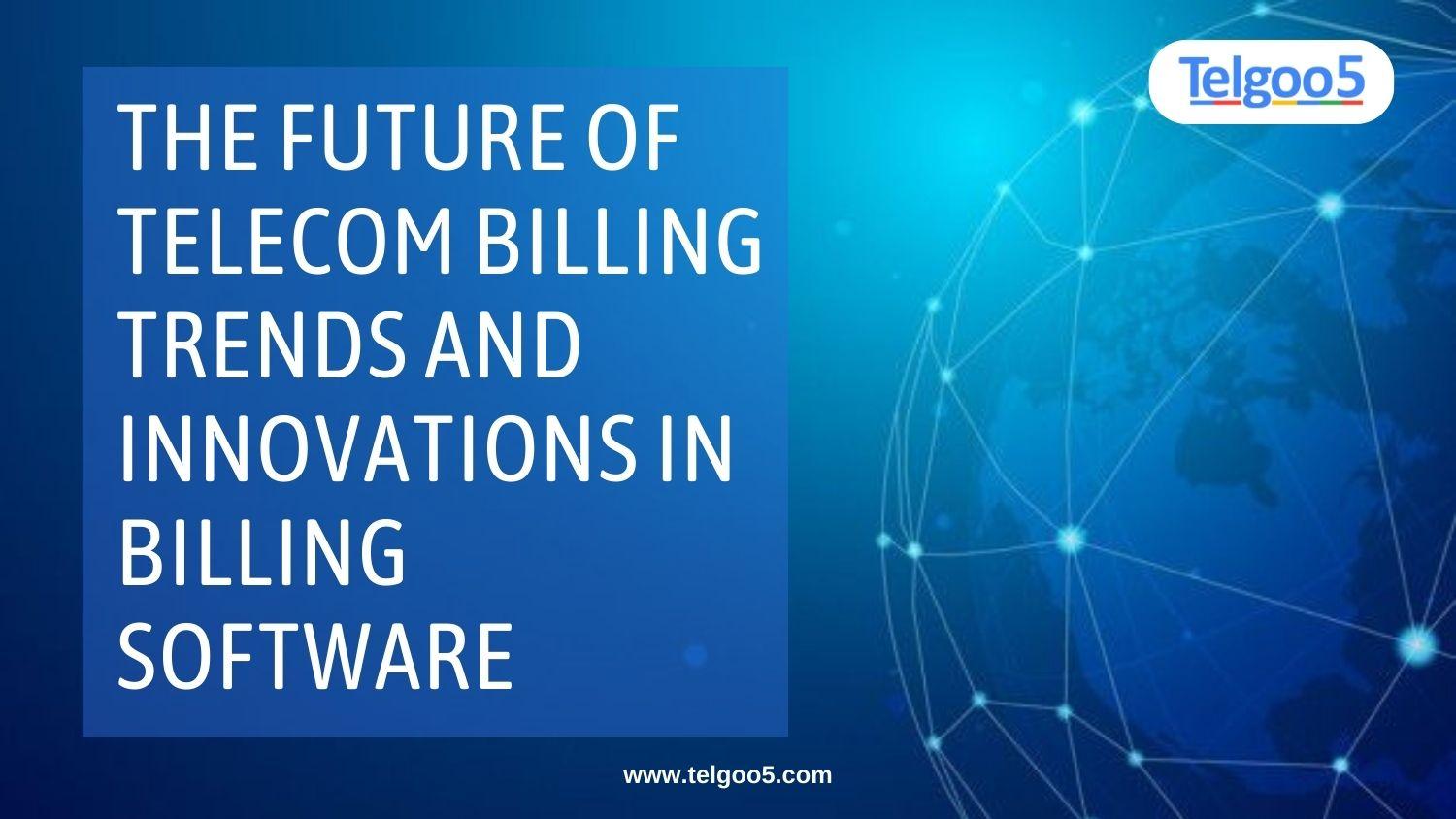Telecommunications billing has come a long way, evolving from manual processes to advanced billing software solutions. As the telecom industry continues to grow and evolve, billing software plays a crucial role in streamlining operations and improving customer satisfaction. In this blog post, we will explore the future of telecom billing, focusing on emerging trends and innovations in billing software. From real-time billing and usage analytics to convergent billing and AI-powered automation, the telecom billing landscape is undergoing significant transformation. By embracing these trends and innovations, service providers can stay ahead of the curve and deliver exceptional billing experiences to their customers.
1. Real-Time Billing and Rating
Real-time billing and rating is a game-changer in the telecom industry. Traditional billing systems often had delays between usage and invoice generation, leading to discrepancies and challenges in accurate billing. However, with advancements in billing software, real-time billing and rating are becoming the norm.
Real-time billing enables service providers to capture usage data in real-time and generate invoices instantly. This eliminates delays and ensures that customers are billed accurately based on their actual usage. Real-time rating allows for dynamic pricing models, where service providers can offer personalized plans and discounts based on customer behavior and preferences. This flexibility enhances customer satisfaction and enables service providers to respond quickly to market demands.
2. Convergent Billing
Convergent billing is another trend that is shaping the future of telecom billing. In today's digital era, customers expect bundled services that encompass voice, data, internet, and other value-added services. Convergent billing enables service providers to combine these services into a single, unified bill.
With convergent billing, customers receive a consolidated bill that reflects their entire range of services. This simplifies the billing process, making it easier for customers to understand and manage their expenses. Service providers can offer attractive package deals and discounts, improving customer loyalty and reducing churn rates. Convergent billing also facilitates cross-selling and upselling opportunities, as service providers can analyze customer usage patterns and preferences to offer relevant products and services.
3. Usage Analytics and Insights
In the future of telecom billing, data analytics and insights will play a crucial role. Billing software will not only focus on generating invoices but also on providing valuable usage analytics and insights to service providers.
Advanced billing software can analyze customer usage patterns, identify trends, and offer actionable insights to service providers. This data-driven approach enables service providers to make informed decisions regarding pricing strategies, service offerings, and customer segmentation. For example, analytics can reveal which services are popular among specific customer segments, allowing service providers to create targeted marketing campaigns.
Moreover, usage analytics can help identify potential revenue leakage or fraud. By analyzing usage patterns and comparing them with billing data, service providers can detect anomalies and take appropriate actions to safeguard their revenue.
4. AI-Powered Automation
Artificial Intelligence (AI) is revolutionizing the telecom billing landscape by introducing automation and intelligent decision-making capabilities. AI-powered billing software can automate various billing processes, reducing manual intervention and human error. This automation enables service providers to streamline operations, improve efficiency, and reduce costs.
AI algorithms can analyze vast amounts of billing data and identify patterns and trends that humans may miss. This helps service providers optimize their pricing models, detect revenue leakage, and offer personalized plans and promotions. AI-powered chatbots and virtual assistants can handle customer inquiries, provide billing information, and assist with issue resolution, improving the overall customer experience.
5. Blockchain Technology in Billing
Blockchain technology has the potential to revolutionize telecom billing by enhancing security, transparency, and trust. With blockchain, billing transactions can be securely recorded and stored in a decentralized ledger. This eliminates the need for intermediaries and ensures tamper-proof records.
Blockchain-based billing systems enable transparent and auditable billing processes. Customers can verify the accuracy of their invoices, ensuring trust and reducing billing disputes. Additionally, blockchain technology can facilitate secure and instant payments, eliminating the need for traditional payment methods and reducing transaction costs.
6. Conclusion
The future of telecom billing is bright, with emerging trends and innovations reshaping the industry. Real-time billing, convergent billing, usage analytics, AI-powered automation, and blockchain technology are transforming the way service providers manage their billing operations. By embracing these trends and adopting advanced billing software solutions, service providers can streamline processes, enhance customer satisfaction, and gain a competitive edge. The future of telecom billing lies in delivering accurate, transparent, and personalized billing experiences that meet the evolving needs of customers. As the industry continues to evolve, service providers must stay abreast of these trends and leverage the power of innovative billing software to drive success in the digital era.



